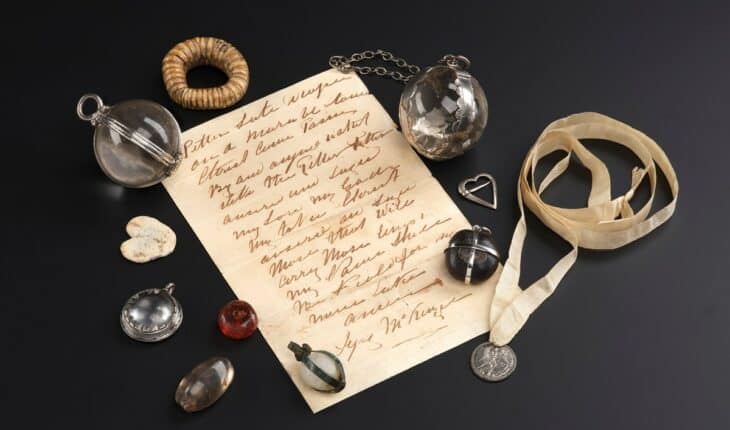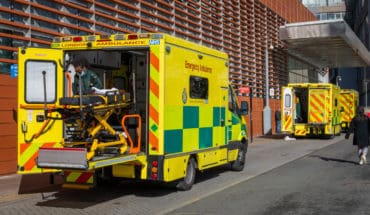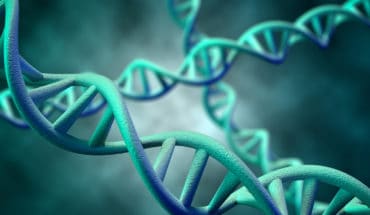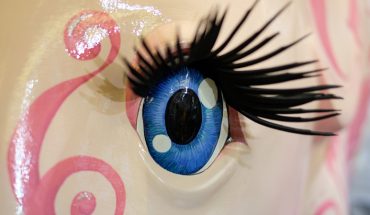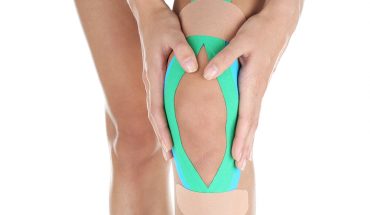Rebecca Wallersteiner looks at Anatomy: A Matter of Life and Death, a major exhibition at the National Museum of Scotland, in Edinburgh, until 30th October 2022, studying the macabre art of body snatching.
At the National Museum of Scotland, in Edinburgh until 30th October 2022, a major exhibition, sponsored by Baillie Gifford Investment Managers, looks at the history of anatomical study, from artistic explorations by Leonardo da Vinci to the grisly Burke and Hare murders. Dr Tacye Phillipson, Senior Curator of Modern Science at National Museums Scotland said: ‘Anatomical knowledge is crucial to medicine, and Edinburgh was a key centre for medical teaching and the development of modern medicine. However, this work relied on the dissection of bodies, the sourcing of which was often controversial and distressing. Anatomists could only get the quantity of bodies they wanted through dehumanising the dead and financing a murky industry. Murder was a particularly shocking consequence of this, with people killed for the sale price of their bodies. This fascinating exhibition explores the relationship between society, poverty, ethics and science at that time, and exposes the human cost of early medical advancement.’
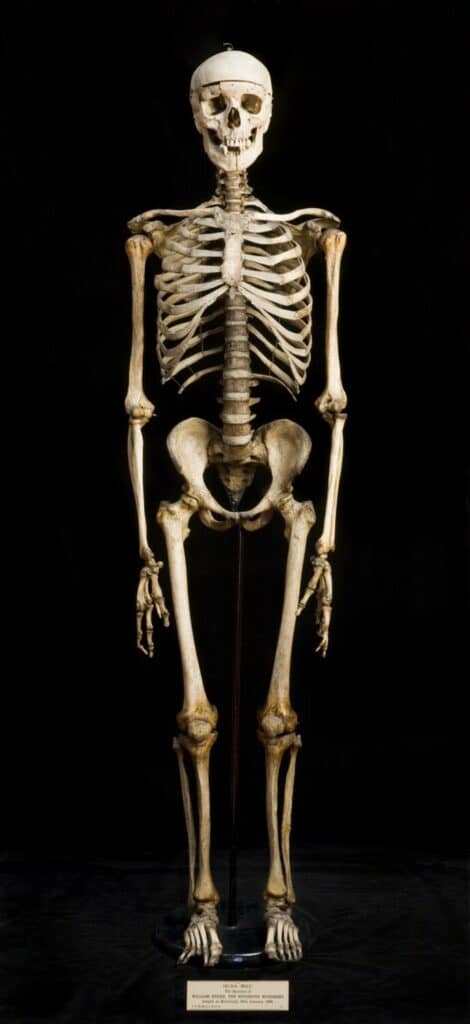
Skeleton of William Burke. Image copyright Anatomical Museum collection, University of Edinburgh
The exhibition charts 500 years of medical exploration and examines the social and medical history surrounding the dissection of human bodies, bringing together a macabre assortment of intriguing memorabilia. It looks at Edinburgh’s role as an international centre for medical study, the part anatomy played in the Scottish Enlightenment and how it taught today. The dissection of human cadavers is still vitally important to the medical education of physicians and pathologists, though the way of sourcing bodies has thankfully changed – it is now exclusively through voluntary donation.
Djer, the third Pharoah of the first ancient Egyptian dynasty is said to have written the first anatomy study more than 5,000 years ago. Our fascination has grown though the centuries. By the middle of the 19th century, physicians who lectured on anatomy in Edinburgh had acquired a kind of celebrity status. Their lectures were attended not only by the city’s medical students, but also by curious artists and writers and even members of the general public, keen to unlock the secrets of human existence. One brilliant anatomy student at Edinburgh University in the early 1800’s was Charles Darwin, who later developed the theory of evolution. During this era, the demand for cadavers for dissection vastly outstripped legitimate supply, which led to crime in bodies being illicitly sourced by criminals and sold on for use in science and medicine.
The history of anatomy is not for the faint-hearted. The first school of anatomy was founded in Alexandria by ancient Greek philosophers Erasistratus and Herophilus who were accused of performing vivisections on live humans. Three Victorian murderers produced by science and medicine were William Burke and William and Margaret Hare. In 1828, with clinical precision, these monsters killed 16 marginalised and poor people in the Edinburgh district of West Port, in just a few months, to provide bodies for the city’s competitive anatomy teachers. The exhibition unpicks the relationship between science and deprivation and looks at the public reaction to the crimes and the anatomical practices responsible for them.
Entering the exhibition you are greeted by two arresting, macabre figures: the first is the preserved skeleton of William Burke, the notorious serial killer and body snatcher. After murdering more than a dozen people and selling their bodies to Edinburgh’s anatomists, he personally met an end befitting his terrible crimes. After he was caught and convicted, he was hanged and publicly dissected in January 1829. He himself became a gruesome teaching aid to help medical students understand human anatomy. You can read his confession and see the robes of the judge who presided over the trial. His accomplice William Hare managed to escape the same fate by giving evidence against Burke. Margaret Hare also escaped hanging. After her release she fled angry mobs and is believed to have journeyed back to Ireland. The other figure is life-size anatomical figure in papier mâché created in the workshop of the 19th century model-maker Louis Auzoux. This gruesome sculpture was a teaching aid for the use of medical students to understand human anatomy.
Other highlights of the exhibition are intricately detailed, exquisite sketches by Leonardo da Vinci, lent by Her Majesty The Queen from the Royal Collection. These introduce the search for understanding about the human body and anatomy’s place in the development of medical knowledge across Europe. Da Vinci became the most practically accomplished and skilled anatomist of the sixteenth century. In his search to reveal the secrets of life he dissected the corpses of frogs, dogs, horses, monkeys and bats. The highpoint came in 1507, when he was able to dissect the body of a man of 100, who had died with little seemingly wrong with him other than extreme old age. This enabled da Vinci to intricately scrutinise and exquisitely draw human muscles and skeleton and the nervous and venous system.
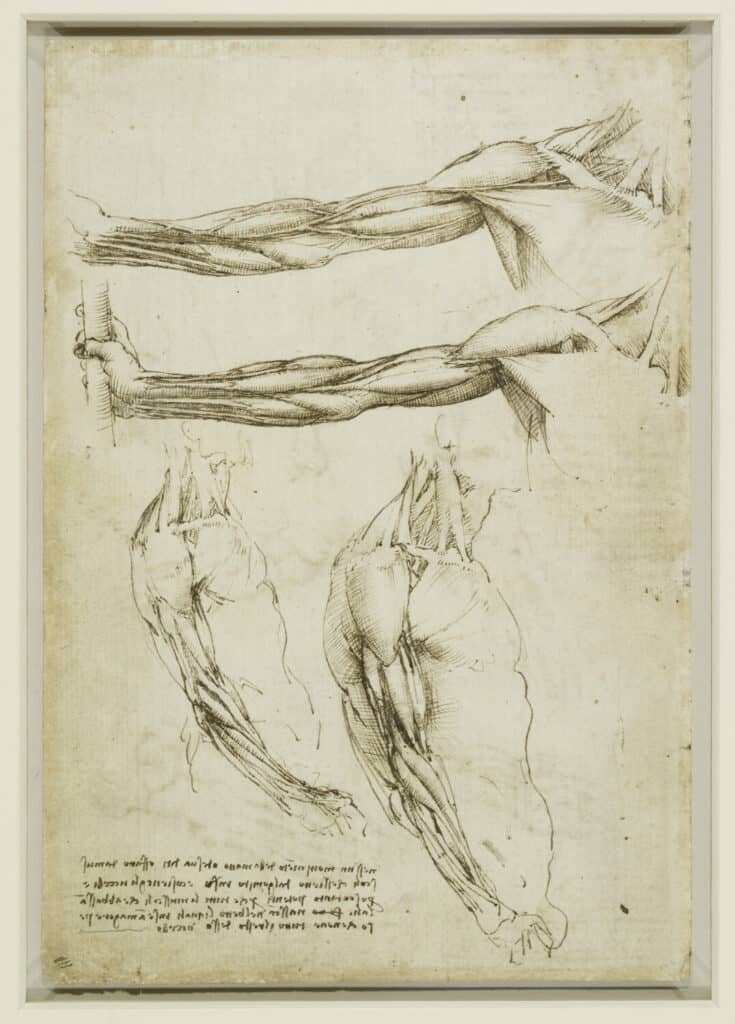
The veins and muscles of the arm by Leonardo da Vinci. Royal Collection Trust © Her Majesty Queen Elizabeth II 2021
Also on display is a ‘mort safe’; a heavy iron box placed over a coffin to deter would-be body snatchers. Other notable objects in the exhibition include the taxidermied remains of a platypus, sent to Scotland for dissection in the 1820s by the anatomist Robert Knox, later infamous for being the client of Burke and Hare and the truly grisly Arthur’s Seat miniature coffins. In late June 1836, a group of boys hunting for rabbits on the slopes of Arthur’s Seat on the outskirts of Edinburgh discovered a small cave in the rock concealed behind slabs of slate. What they found hidden there has remained a perplexing mystery ever since: Seventeen miniature coffins nestled together behind the slate. Eight have survived and are on display in the National Museum of Scotland. No one knows who carved the coffins and who placed them in their sepulchre, or whether they were witches, satanic worshippers or merely eccentric, or why.
Don’t miss seeing the fascinating film featuring an interview with a woman, who, like her late husband has decided to donate her body to be used to teach medical students, with commentary from the current professor of anatomy at Edinburgh University.
The exhibition closes by highlighting the changing practices and attitudes around body provision in the century and a half since the Burke and Hare murders, bringing the story right up to date. It looks at the modern approach to body donation at universities in Scotland and contrasts the ethics, practices and beliefs today with those of two centuries ago.
Visiting the museum is a wonderful way to spend an afternoon, especially for people interested in anatomy, medical history and art.
Visitor Information
www.nms.ac.uk Anatomy: A Matter of Life and Death is at the National Museum of Scotland, Chambers Street, Edinburgh, EH1, until 30 October.
Admission: Adults: £10, over-60s £8.50, concessions £7.50. Free entry for National Museums Scotland members and under 16s.
- Dream Worlds a new exhibition in Cambridge - 14th December 2024
- “All Our Stories” a major new exhibition - 26th September 2024
- Dance yourself well - 23rd June 2024
